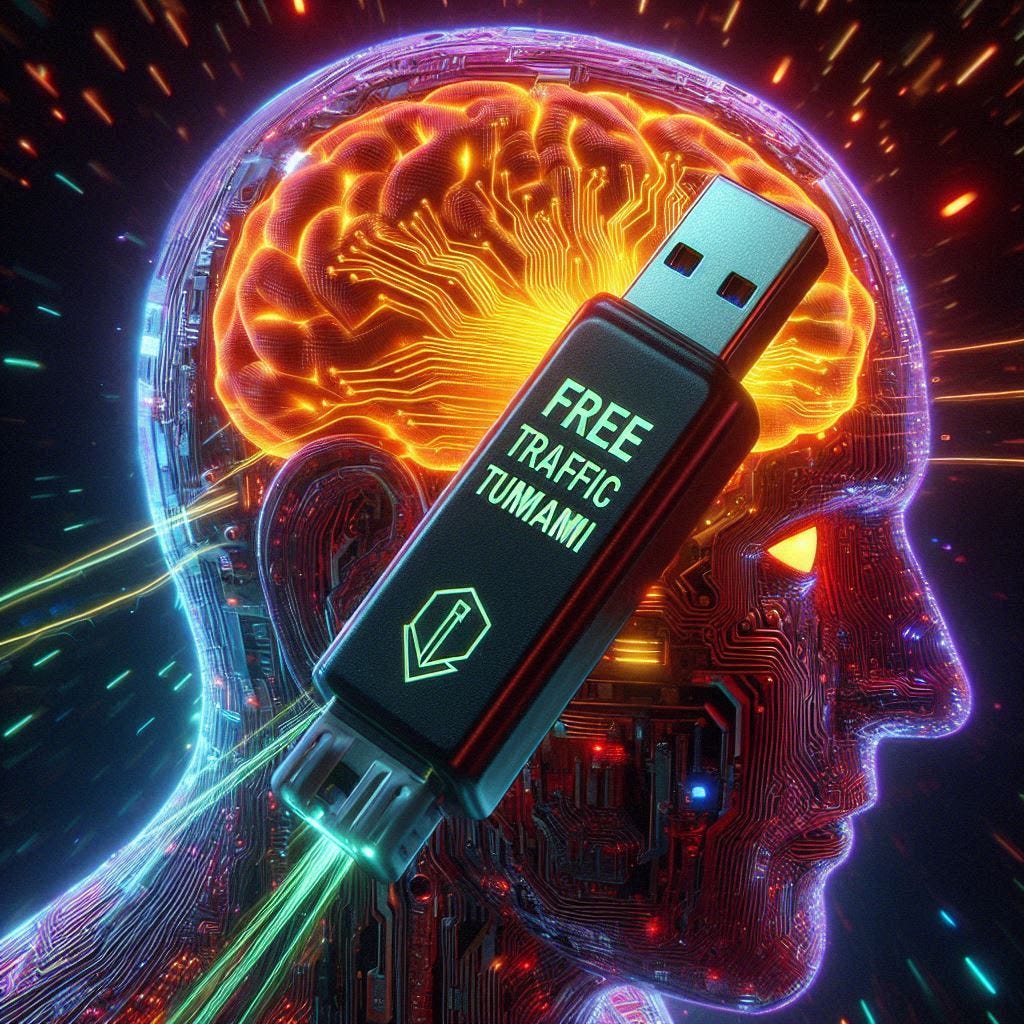Data Science News
Analyticsindiamag
159

Image Credit: Analyticsindiamag
Titans Space Industries Selects Andhra’s Jahnavi Dangeti for Space Mission in 2029
- Jahnavi Dangeti, a 23-year-old engineer from Andhra Pradesh, has been chosen as an Astronaut Candidate (ASCAN) for the Titans Space Astronaut Class of 2025.
- Dangeti will undergo intensive multi-year training to prepare for space missions focused on advancing science and human exploration.
- Her training, starting in 2026, will cover spacecraft systems, mission simulations, zero-gravity flights, emergency procedures, and more.
- The first orbital mission in 2029 will be led by veteran NASA astronaut William McArthur Jr. at Titans Space, offering research opportunities in space.
- Dangeti expressed gratitude to Titans Space Industries Inc. and mentors for the opportunity.
- She previously completed NASA's International Air and Space Program and participated in the Analog Astronaut Training Centre in Poland.
- Dangeti aims to contribute to the next era of space exploration and scientific research in microgravity.
Read Full Article
9 Likes
Analyticsindiamag
2.2k

Image Credit: Analyticsindiamag
Replit Crosses $100 Million ARR, Grows Tenfold in Less Than a Year
- Replit has achieved over $100 million in annual recurring revenue (ARR), surging tenfold from its 2021 figure of $10 million, as announced by founder and CEO Amjad Masad.
- Replit provides a cloud-based development environment, catering to both enterprise users such as Zillow and HubSpot, as well as individual developers like Yohei Nakajima and Gerrard Lobo.
- The company has not sought additional funding since its 2023 round, maintaining over half of its capital. Masad indicated ample growth opportunities and emphasized the appeal of joining Replit at this promising stage.
- In parallel, Lovable, a new player in the software tooling sector, achieved $75 million in ARR just seven months post-launch, showcasing rapid growth and industry interest in software enhancement tools.
- Anton Osika, Lovable's founder, expressed gratitude for the support received and highlighted the need for more senior engineers to contribute to shaping the future of software.
- Both Replit and Lovable's notable success underlines the ongoing investor and developer enthusiasm for innovative tools that enhance software development and deployment processes.
Read Full Article
19 Likes
Analyticsindiamag
248

Image Credit: Analyticsindiamag
How Swiggy Manages the Chaos of 1.5 Million Alerts Every Day
- Swiggy, a popular food-ordering platform in India, manages over 1.5 million alerts daily through its in-house platform Klaxon.
- Klaxon monitors issues and sends actionable alerts to help teams address potential disruptions and ensure customer satisfaction.
- The platform filters and correlates data from various sources like Hive, Snowflake, and Kafka to create real-time alerts.
- Klaxon's multi-channel alert delivery system includes email, Slack, SMS, app notifications, and Freshdesk ticket creation for customer care.
- The platform reduced operational costs by 50–60% by optimizing Kafka jobs and implementing on-demand Databricks setup.
- Real-time alerts from Klaxon have led to improved outcomes like avoiding damage to fragile items during delivery and reducing mishandling complaints.
- For operations teams, Klaxon provides live insights into order delays, allowing timely adjustments to improve customer satisfaction.
- Klaxon channels customer complaints effectively to specialist agents for quicker responses and fewer escalations.
- Swiggy plans to enhance Klaxon further by unifying environments, measuring alert impact, and focusing on essential alerts only.
- Klaxon plays a critical role in Swiggy's operational efficiency, ensuring timely actions and preventing unnoticed anomalies that could affect customer experience.
Read Full Article
7 Likes
Analyticsindiamag
385

Image Credit: Analyticsindiamag
Google Hands Over Agent2Agent AI Protocol to the Linux Foundation
- The Linux Foundation launched the Agent2Agent (A2A) project at the Open Source Summit North America, receiving the A2A protocol from Google for open standard AI agent interoperability.
- A2A allows AI agents to securely communicate and collaborate across different platforms, frameworks, and vendors, with support from companies like AWS, Cisco, Microsoft, Salesforce, SAP, and ServiceNow.
- The protocol addresses the need for agents to work together in dynamic environments and infrastructure.
- The Linux Foundation will govern the A2A project, promoting neutrality, collaboration, and long-term growth.
- A2A offers SDKs and tooling to aid developers in creating cross-compatible agents and avoiding vendor lock-in.
- Google Cloud's VP highlighted the importance of the A2A protocol for enabling open communication standards in AI.
- The collaboration with the Linux Foundation and technology providers aims to drive innovation in AI capabilities under an open-governance framework.
- The A2A project under the Linux Foundation will prioritize extensibility, security, and usability, with plans to develop additional agent standards.
- The goal of contributing A2A to an open ecosystem is to expedite enterprise adoption of intelligent agentic systems.
- Developers and organizations are encouraged to engage with the A2A project through its GitHub page.
Read Full Article
23 Likes
Medium
64

Image Credit: Medium
This Easy Tool "Hacks" ChatGPT, Gemini & Grok To Send You Millions Of Clicks.
- A tool claims to 'hack' into ChatGPT, Google Gemini, and Elon Musk's Grok to generate millions of clicks without advertising costs.
- The tool is an intelligent automation system that leverages AI bots, trending prompts, and content hooks for massive attention.
- Users can select an offer, utilize AI scripts to create engaging content, and publish on pre-made traffic platforms to drive traffic.
- The system does not require showing face, a website, ad investment, works in any niche, and is beginner-friendly.
- The tool promises to provide free traffic using AI bots, which is considered an untapped traffic source.
- Users are encouraged to get the 'Free Traffic Tsunami' offer to benefit from the tool.
- The world is yet to realize the potential of AI for free traffic, and users are urged to seize the opportunity now.
Read Full Article
3 Likes
Medium
112
Image Credit: Medium
10 Common AI Models Explained Simply: From Trees to Neural Networks
- AI models function as decision-making tools in AI systems, each with unique strengths and applications.
- Common AI models include linear regression, used for numerical predictions like house prices.
- Logistic regression is for classification tasks, such as spam detection or loan approval.
- Decision trees operate as flowcharts to make decisions based on yes/no questions.
- Random forests consist of multiple decision trees working together, each contributing to a final decision.
- Support Vector Machines draw boundaries between data categories, useful for tasks like image classification.
- K-Nearest Neighbors algorithm makes decisions based on proximity to other data points.
- Naive Bayes relies on probability and assumes independence of features to classify items like emails.
- K-Means Clustering is an unsupervised model that groups similar data points into clusters.
- Neural Networks are inspired by the human brain and are used in advanced AI applications like image recognition.
- Reinforcement learning models learn through trial and error, receiving rewards or penalties based on their actions.
Read Full Article
6 Likes
Analyticsindiamag
210

Image Credit: Analyticsindiamag
India’s Measured March Towards Agentic AI
- The year 2025 is centered around agentic AI, enabling systems to perceive, reason, and act independently.
- Adoption of agentic AI in India is deliberate and gradual, with companies rethinking their processes to integrate the technology.
- Challenges like adoption efforts, regulation compliance, and education hinder the full-scale integration of agentic AI.
- Tredence has implemented agentic AI in financial services for portfolio rebalancing, lending, and fraud detection.
- Agentic AI's advantage lies in real-time decision-making compared to traditional AI, especially crucial in fraud prevention.
- Human oversight remains essential in finance; hybrid decision-making blends agentic AI with human intervention.
- India's regulatory framework emphasizes preventing data misuse, ensuring unbiased decisions, and protecting the end users.
- Agentic AI will transform job roles, shifting focus from manual tasks to strategic decision-making and client engagement.
- The future involves developing advanced 'super agents' to manage entire customer relationships or complex workflows.
- India's potential lies in offering agentic services in multiple languages, leveraging existing infrastructure like UPI for AI-powered financial systems.
Read Full Article
12 Likes
Analyticsindiamag
47

Image Credit: Analyticsindiamag
Indian IT’s Inevitable Evolution: From Headcount to Impact
- Indian IT is shifting from manpower-intensive service delivery to AI-powered productivity, productisation, and platformisation, embracing a new approach called 'services as software' (SaS) beyond SaaS.
- The convergence between service and product models is becoming crucial, with startups already embracing the SaS model and larger firms slowly transitioning.
- India's success in building products like UPI and DBT serves as a template for global leadership in this evolution.
- The industry is moving towards 'services as software' (SaS) model, focusing on advanced technology for efficient outcomes.
- AI-driven workflows and automation are reshaping service delivery, enabling faster delivery and scalability for businesses.
- Companies like Wipro, Infosys, and TCS are leveraging AI to transform service code into reusable platforms, reducing manual interventions.
- AI-native talent is crucial for delivering value with fewer people, shifting from headcount-based billing to impact-based outcomes.
- Challenges include managing legacy service contracts, reskilling the workforce in AI tools, problem-solving, and business strategy.
- The global trend towards AI-driven services is reshaping enterprise expectations, with firms like Accenture restructuring their services model under AI-first frameworks.
- While Indian IT firms are transitioning towards AI-powered services, gaps remain in understanding enterprise expectations for measurable outcomes and value-based pricing.
Read Full Article
2 Likes
Medium
380

Image Credit: Medium
Inside the GPU: Architecture That Powers Modern AI
- GPUs, initially designed for speeding up visual applications, excel in data-heavy tasks like matrix multiplication for neural network computations.
- GPUs use parallel processing with thousands of cores, contrasting CPUs optimized for sequential tasks.
- Structurally, GPUs resemble a tree with Graphics Processing Clusters (GPCs) housing multiple Streaming Multiprocessors (SMs) that execute tasks.
- Work in SMs is organized into warps, groups of 32 threads that execute instructions together with support from CUDA cores, Tensor cores, and Ray Tracing cores.
- Efficient GPU programming involves minimizing global memory access and optimizing shared memory and registers.
- GPU memory system includes registers, shared memory at SM level, global memory, constant memory, L1, and L2 caches.
- Essential in multi-GPU setups is efficient communication between devices facilitated by technologies like PCIe and NVLink.
- GPUs suit machine learning well due to their ability to handle parallel neural network workloads efficiently.
- Not all algorithms can be easily parallelized on GPUs, and power consumption along with cost, especially for high-end models, are concerns.
- The GPU has progressed to become the cornerstone of AI development with tailored design for modern machine learning demands.
Read Full Article
22 Likes
VentureBeat
356

Image Credit: VentureBeat
Salesforce launches Agentforce 3 with AI agent observability and MCP support
- Salesforce launched Agentforce 3 with AI agent observability and MCP support, addressing challenges in deploying digital workers at scale.
- Agentforce 3 introduces a Command Center for real-time visibility into AI agent performance and interoperability standards for connecting with business tools.
- Surging demand for AI agents has led to a 233% increase in usage, with notable returns for early adopters like Engine and 1-800Accountant.
- PepsiCo is leveraging Agentforce for an AI-driven transformation, integrating platforms for enhanced customer engagement and backend efficiency.
- The new Command Center provides detailed analytics, health monitoring, and recommendations for optimizing AI agent performance.
- Salesforce's support of the Model Context Protocol (MCP) enables native connectivity with MCP-compliant servers for seamless integrations.
- The platform offers enterprise-grade interoperability with partners like Amazon Web Services, Box, Google Cloud, IBM, PayPal, and Stripe.
- Enhanced Atlas architecture ensures enterprise-grade performance, lower latency, response streaming, and failover between AI model providers.
- Salesforce hosts Anthropic's Claude models within its infrastructure via Amazon Bedrock for enhanced security and governance.
- Global availability expansion, industry-specific actions, and flexible pricing options aim to facilitate faster AI agent deployment and scalability.
- The Agentforce 3 platform is the focus of the article, detailing its features, benefits, adoption by companies like PepsiCo, and roadmap for enterprise AI deployment.
Read Full Article
20 Likes
Dev
428

Image Credit: Dev
Text Compressing Introduction - Huffman Coding in Swift
- The article introduces Huffman coding and its importance in text and code compression.
- Huffman coding is preferred for daily files like source code, JSON, XML, and plain text as it assigns shorter bit sequences to common characters and longer ones to rare ones, achieving significant compression.
- The article explains how Huffman trees work, with visual examples, and provides a step-by-step guide on implementing Huffman coding from scratch.
- The author discusses why Huffman coding is suitable for text/code compression and demonstrates it using the example of compressing the word 'Mississippi' to just 3 bytes.
- The compression system includes components such as frequency analysis, Huffman tree construction, bit-level file operations, and compact tree serialization.
- The article mentions the CLI tool 'Kompressor,' named after a plushie cat, that signifies compression and never fully 'decompresses.'
Read Full Article
25 Likes
Hackernoon
121

Image Credit: Hackernoon
A Group of Students Are Revolutionizing the Way You Discover What to Watch, Read, and Listen
- A group of students from Brazil, known as RecomendeMe, is reshaping how recommendations are made for movies, music, and books.
- They focus on human-centered recommendations rather than relying on algorithms.
- Frustrated with algorithmic feeds from platforms like Netflix and Spotify, they built a platform based on trust and human connections.
- RecomendeMe began as a simple webpage where people shared recommendations and reasons for others to try them.
- It evolved into a movement connecting users worldwide through authentic recommendations.
- The platform stands out by emphasizing real people sharing genuine recommendations with personal insights.
- Users can explore recommendations based on genres, emotions, or locations, fostering cultural connections.
- RecomendeMe is seen as a cultural rebellion against conventional content algorithms and trends.
- The platform is expanding with upcoming features like video-style recommendations and a multilingual version.
- There are plans for creator mode, fast community chat, and an emphasis on authentic growth without shortcuts.
- RecomendeMe believes in the importance of human-curated recommendations and meaningful connections over automated suggestions.
- They aim to combat content fatigue and inspire users by promoting personal tastes and individuality.
- The platform resonates with those seeking genuine recommendations to combat feeling overwhelmed or uninspired by mainstream content.
- RecomendeMe's core mission is to redefine how people discover content by focusing on personal connections and authenticity.
- The platform offers an alternative to algorithm-driven recommendations by prioritizing the human touch in sharing what matters most.
- It aims to provide users with a genuine and engaging way to explore movies, music, books, and other cultural recommendations.
Read Full Article
7 Likes
Dev
129

Image Credit: Dev
Understood and implement the scoring algo BM 25
- Addressing the need to find relevant information buried in a pile of documents, the article discusses the importance of assigning relevance scores to documents based on search queries.
- Introduces the concept of tokens in documents and the creation of an inverted index to associate tokens with the documents they appear in.
- Explains the initial scoring algorithm based on token frequency in documents, highlighting the need to address issues such as token count and relevancy.
- Proposes an enhanced scoring function considering all query tokens, limiting the impact of individual tokens, and boosting results matching multiple tokens.
- Introduces the concept of diminishing returns to prevent a linear score increase based on token frequency, providing a more nuanced scoring approach.
- Discusses the limitations of the TF approach and introduces the TF-IDF method to incorporate the rarity of words across all documents in the score calculation.
- Further advances the scoring algorithm by introducing the BM25 method, which considers factors like term frequency, document length, and normalization to determine document relevance.
- Detailed examples and calculations are provided to demonstrate how BM25 scoring works and how it can be implemented effectively in code.
- The article concludes by highlighting the importance of adapting the scoring algorithm to consider various document attributes like title, date, and location for improved relevance ranking.
Read Full Article
7 Likes
Medium
77

Image Credit: Medium
“️ Give Your Python Code a Voice: A Beginner’s Guide to pyttsx3"
- pyttsx3 is a Python library for offline text-to-speech conversion.
- It offers more control over voice properties like rate, volume, and gender compared to online tools.
- It is cross-platform and suitable for both beginners and advanced users.
- Installation is straightforward, but on Windows, 'pypiwin32' might be needed for smooth operation.
- A simple script example is shown to make text speak using pyttsx3.
- Customization options include changing voice (male to female), speech rate, and volume.
- Switching voices involves accessing and setting the 'voices' property.
- The speech rate can be adjusted using the 'rate' property.
- Volume levels can be set between 0.0 (lower) to 1.0 (louder).
- An example of creating and saving an audio file using pyttsx3 is provided.
- This tool allows for adding voice to Python projects without relying on the cloud.
- It simplifies making Python code more expressive and versatile.
- Python scripts can be programmed to provide spoken feedback.
- Overall, pyttsx3 is user-friendly and powerful for integrating speech capabilities.
- It is recommended for tasks like automation, accessibility, and enhancing code expressiveness.
Read Full Article
4 Likes
Medium
337

Backpropagation in Deep Learning
- Backpropagation is the learning algorithm used by most neural networks to update model weights after each prediction.
- It helps neural networks learn from mistakes by adjusting internal weights.
- The process is similar to correcting a student's mistake and allowing them to improve.
- Backpropagation allows the network to adjust internal weights in the right direction.
- Steps in backpropagation involve input data passing through network layers, making predictions, and comparing them to actual labels.
- A loss function like MSE or Cross-Entropy quantifies how wrong the model's prediction was.
- Weights are adjusted based on minimizing the loss, and this cycle repeats for the next batch of data.
- Analogies like a thermostat adjusting room temperature help understand the concept of backpropagation.
- Backpropagation is essential for deep learning models to learn and improve over time.
- It guides the network in tweaking internal weights to get closer to correct values.
- Backpropagation is the foundation of how deep learning models improve their decisions over time.
Read Full Article
20 Likes
For uninterrupted reading, download the app